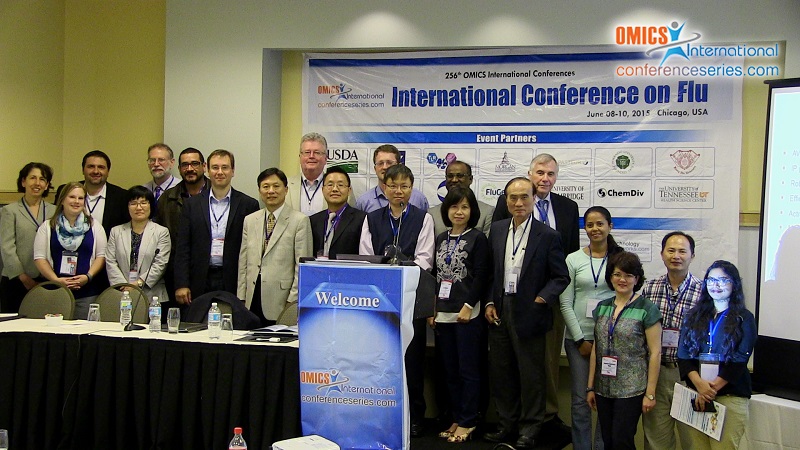
Khalid A Enan
Head Department of Virology, Central Laboratory,
Sudan
Title: Survey of causative agents for acute respiratory infections among patients in Khartoum- State, Sudan, 2010—2011.
Biography
Biography: Khalid A Enan
Abstract
Objective This study was carried out to determine causative agents of acute respiratory illness of patients in Khartoum State, Sudan. Methods Four hundred patients experiencing respiratory infections within January-March 2010 and January-March 2011 were admitted at Khartoum Hospital and had their throat swab samples subjected to multiplex real-time RT-PCR to detect influenza viruses (including subtypes) and other viral agents. Isolation, nucleotide sequence and phylogenetic analysis on some influenza viruses based on the HA gene were done. Results Out of 400 patients, 66 were found to have influenza viruses (35, 27, 2, and 2 with types A, B, C, and A and B co-infections, respectively). Influenza viruses were detected in 28, 33 and 5 patients in the age groups <1, 1–10, and 11–30 years old, respectively but none in the 31– 50 years old group. Out of 334 patients negative for influenza viruses, 27, 14, and 2 were positive for human respiratory syncytial virus, rhinovirus and adenovirus, respectively. Phylogenetic tree on influenza A(H1N1)pdm09 subtype shows that Sudan strains belong to the same clade and are related to those strains from several countries such as USA, Japan, Italy, United Kingdom, Germany, Russia, Greece, Denmark, Taiwan, Turkey and Kenya. Seasonal A H3 subtypes have close similarity to strains from Singapore, Brazil, Canada, Denmark, USA and Nicaragua. For influenza B, Sudan strains belong to two different clades, and just like influenza A (H1N1)pdm09 and A H3 subtypes, seem to be part of worldwide endemic population (Kenya, USA, Brazil, Russia, Taiwan and Singapore).



